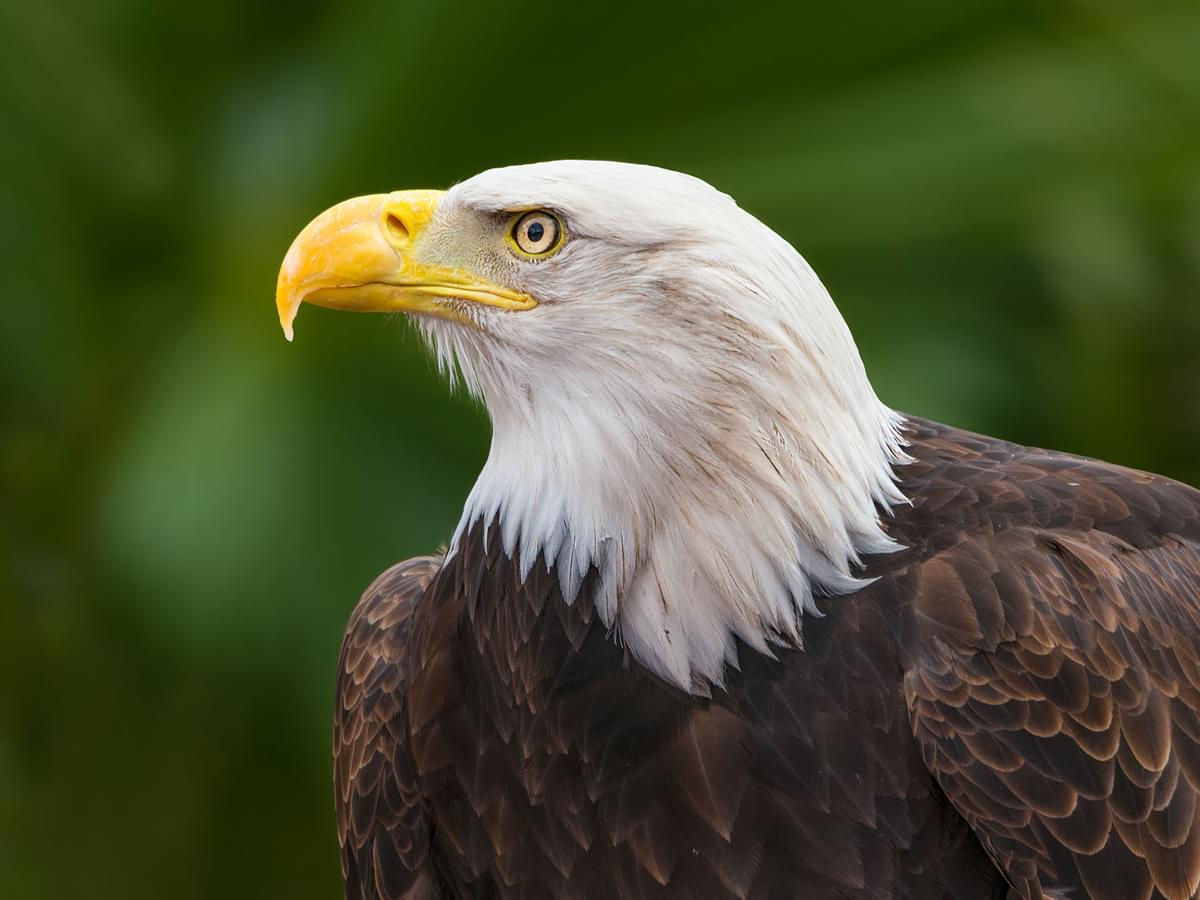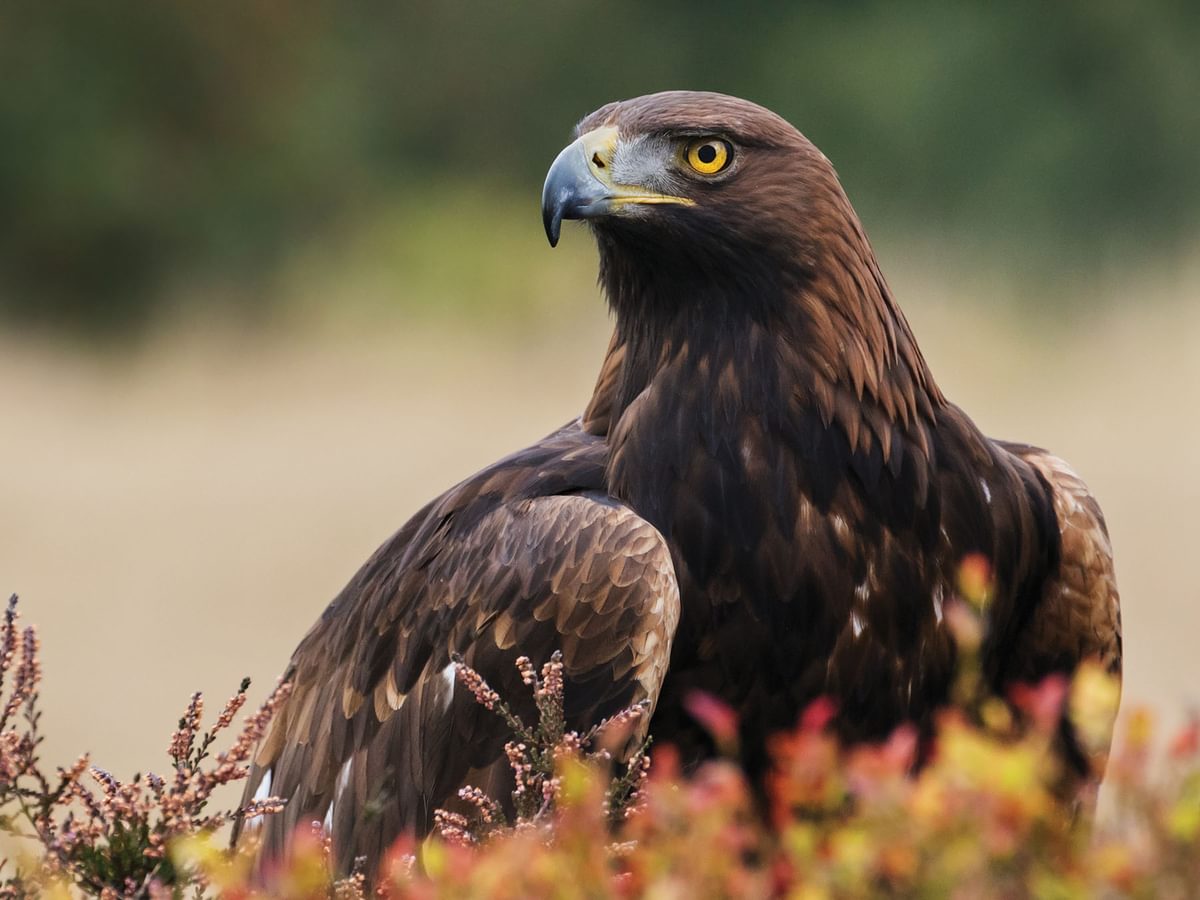Bald Eagles and Golden Eagles are two of the most commonly known and searched eagles in the world. Both are related to the Accipitridae family (kites, hawks and eagles), but they sit under different groups. This article will highlight the main differences between the bald eagle and the golden eagle to help you identify and learn more about these majestic birds.
Adult bald and golden eagles do not look similar and are easy to distinguish, as the bald eagle has a white head and tail, and the golden eagle has a dark brown head and tail.
Juvenile bald eagles do, however, look extremely similar to golden eagles as they lack a white head and tail. One of the ways to tell the difference between the two is juvenile bald eagles have patchy white or tawny on their plumages, mainly under their underparts, under the wings and tails. The tail of a golden eagle is not patchy, and they lack any extensive white on the wing and body.
There are many other differences as well, which we'll go into more detail below.

Bald Eagle

Juvenile Bald Eagle
Comparison
| Feature | Bald Eagle | Golden Eagle |
|---|---|---|
| Size | Large; body length about 70-102 cm (28-40 inches) | Slightly smaller; body length about 66-100 cm (26-39 inches) |
| Wingspan | Very broad; 1.8-2.3 meters (5.9-7.5 feet) | Long and broad; 1.8-2.34 meters (5.9-7.7 feet) |
| Weight | Heavier; 3-6.3 kg (6.6-13.9 lbs) for males, 4-7 kg (8.8-15.4 lbs) for females | 3-6.5 kg (6.6-14.3 lbs) for males, 3.8-6.8 kg (8.4-15 lbs) for females |
| Appearance | White head and tail, dark brown body and wings | Overall dark brown with a golden sheen on the head and neck |
| Yellow beak and feet | Darker beak and talons | |
| Habitat | Near large bodies of open water, with abundant fish supply | Varied, including mountains, hills, cliffs, and open terrains |
| Distribution | North America | North America, Europe, Asia, parts of North Africa |
| Diet | Primarily fish; also feeds on small mammals, birds, carrion | Small to medium mammals, birds, carrion; more predatory |
| Nesting | Large nests in tall trees or on cliffs near water | Cliff faces, large trees, or man-made structures in open landscapes |
| Flight | Soaring with flat wings, occasional flaps | Deep wing beats with occasional soaring, known for agile flight |
| Lifespan | Up to 20-30 years in the wild | Up to 30 years in the wild, sometimes more |
| Legal Protection | Protected in the U.S. by the Bald and Golden Eagle Protection Act | Same as Bald Eagle |
| Status | Least Concern, but previously endangered due to DDT | Least Concern, stable population |
| Identification Tips | Adult’s distinctive white head and tail on a dark body | Uniform dark brown coloring with lighter golden nape |
| Larger beak in proportion to head | More robust and muscular appearance |

Golden Eagle in flight
Other Differences
- The head profile of a bald eagle is more elongated. Their heads are bigger and both the head and bill protrudes. Golden Eagles on the other hand have smaller bills and heads.
- The bill and cere (bare patch at the base of the upper side of the bill) of a younger or juvenile bald eagle is darkish in color, whereas the golden eagle has a yellow cere.
- Bald Eagles also can only be found in Northern America, whereas golden eagles can be found across the Palearctic, northern Africa and Northern America.
- Golden Eagle feathers have a pattern that is marbled, whereas bald eagles have spotted feathers.
- In flight, bald eagles tend to hold their wings flatter and have deeper wingbeats than those of the golden eagle.
- Whilst perched, bald eagles will often have the feathers on the head semi-erect, which can make the general appearance seem more chunky or blocky.
- Juvenile bald eagles have unfeathered tarsi (ankle), whereas golden eagles have feathered tarsi - although this can usually only be seen up close.
- Bald Eagles belong to the Haliaeetus genus, which classifies it as a Sea Eagle.
- Golden Eagles belong to the Aquila genus, which is the genus of True Eagles, both are eagles though.
- Bald Eagles generally prey on smaller things like fish, small mammals and carrion, whereas Golden Eagles prey on intermediate-sized mammals weighing up to 4kg and rarely takes food over water, unlike the bald eagle.
Size Comparison
Both the bald and golden eagles are very large raptors and are both similar in size, making it extremely hard to distinguish between the two by just looking at the birds. As with many birds of prey, females are the larger of the sexes and can be up to 25% larger than males.
The average length for a golden eagle is between 70 - 99cm. The wingspan is between 185 - 222cm and weighs between 2,387 - 6,460g (2.3 - 6.4kg).
The average length for a bald eagle is between 71 - 96cm and has a wingspan between 168 - 244cm. The average weight is anywhere from 3,000g - 6,300g (3 - 6.3kg).
Bald Eagle
Haliaeetus leucocephalus

Length
70-102cm
Wingspan
180-244cm
Weight
3-6.3kg
Strength
Golden eagles have stronger and more powerful talons than those of the bald eagle. This is because golden eagles generally hunt bigger prey than the bald eagle, who usually have diets of fish, carrion and terrestrial mammals, such as hares and muskrats.
Golden Eagles, on the other hand, generally take intermediate size prey anywhere up to 4kg in mass.
Golden Eagle
Aquila chrysaetos

Length
66-102cm
Wingspan
180-230cm
Weight
3-6.7kg
Do golden eagles and bald eagles hang out together?
Golden Eagles are mostly solitary birds and are therefore mostly seen on their own, or in a pair during the breeding season. Bald Eagles are much more sociable and tolerate other species of birds. However, Bald Eagles are highly competitive with other bald eagles so will not usually tolerate them.
So generally speaking, you're very unlikely to see golden and bald eagles together.
